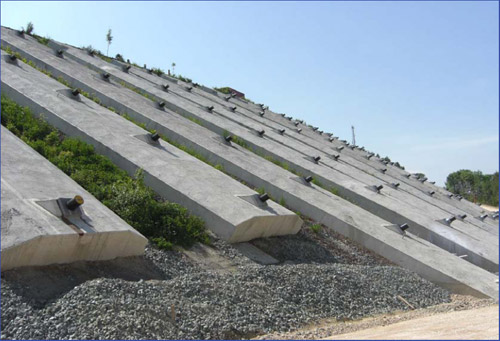Discover the Sturdiness and Strength of Williams Anchors for Your Next Job
Reliable Rock Anchors for Secure and Secure Foundations
In the realm of civil design, the function of reliable rock anchors can not be overstated, as they are critical in establishing protected and stable structures throughout a variety of applications. These anchors not only help with load transfer from structures to bedrock but additionally give important resistance versus all-natural forces, consisting of wind and seismic task. Understanding the different sorts of rock supports, their particular applications, and the intricacies of installment and maintenance is vital for optimizing their efficiency. What aspects should be taken into consideration when selecting one of the most proper securing service for a given job?
Kinds Of Rock Anchors

Easy supports depend on the weight of the structure and the surrounding dirt or rock to provide resistance. Energetic supports, on the other hand, involve the application of tension through a high-strength cable television or rod, developing a pre-stressed condition in the support - Williams Anchors.
Grouted anchors are another significant group, where a steel bar or wire is placed into a pierced hole, followed by a cementitious grout. When cured, the grout bonds with the surrounding rock, creating a robust anchoring system. Each sort of rock anchor offers unique benefits based upon the specific geological conditions and architectural needs, thereby playing a critical duty in the overall integrity and longevity of created centers.
Applications in Building And Construction
Rock anchors play a pivotal duty in different construction applications, supplying vital assistance and stability in varied settings. These innovative services are made use of in projects ranging from large infrastructure growths to smaller sized property frameworks. One of the main applications of rock supports is in the stablizing of slopes and keeping walls, where they assist prevent soil disintegration and preserve architectural honesty.
Additionally, rock anchors contribute in protecting structures for bridges, tunnels, and skyscrapers, guaranteeing they can endure side forces such as wind and seismic task. Their convenience allows for setup in challenging geological problems, making them excellent for projects in hilly or rough terrains.

Trick Selection Standards
Choosing the appropriate rock anchor for a specific application calls for careful factor to consider of a number of crucial criteria. Primarily, the geological problems of the website need to be extensively evaluated. Recognizing rock kind, stamina, and stability is necessary to ensure that the support will execute efficiently under tons problems.

An additional important aspect is the deterioration resistance of the support materials. In atmospheres revealed to moisture or chemicals, using corrosion-resistant materials will extend the lifespan of the anchors and preserve structural stability over time.
Additionally, the support's setup approach must align with the project's needs and constraints. Alleviate of installation, along with the potential effect on surrounding frameworks, should be taken into consideration.
Installation Methods
Reliable installation methods are vital for the effective efficiency of rock supports. Correct installment ensures that the supports achieve the desired load-bearing capacity and stability within the geological problems. The initial step in the installation process involves site analysis, where geological studies establish the rock type, condition, and any possible difficulties.
Once the website is evaluated, the suitable drilling approach need to be selected-- choices include rotary boring, diamond drilling, or percussion boring. The option relies on rock firmness and environmental considerations. Exact boring deepness and angle are vital to make certain that the supports align with structural demands and load distribution.
After drilling, the following phase includes cleansing the borehole to remove particles, which can jeopardize bond stamina. Following this, the anchor is placed, and if called for, a grout or resin is infused to enhance adhesion. The healing time of these materials have to be stuck to, making sure that the anchors achieve complete stamina before any type of load is applied.
Maintenance and Evaluation
Proper upkeep and examination of rock anchors are important to guarantee their lasting performance and reliability (Williams Anchors). Normal analyses assist recognize any potential problems, such as corrosion, displacement, or structural exhaustion that can endanger the integrity of the anchoring system
Routine examinations need to be conducted at specified periods, taking into account ecological factors and the particular application of the rock supports. Aesthetic examinations ought to focus on the subjected areas of the supports, inspecting for indications of corrosion, splits, or various other abnormalities. In addition, it is essential to the original source review the bordering geological conditions to find any shifts in soil or rock that might impact anchor efficiency.
In many cases, advanced methods such as tons screening or non-destructive screening might be warranted to establish the anchors' load-bearing ability and overall health and wellness. Proper paperwork of evaluation findings, upkeep activities, and any type of repair services or substitutes performed is crucial for ongoing assessment and compliance with industry criteria.
Final Thought
Finally, reputable rock supports play an essential function in ensuring protected and stable structures throughout different construction applications. By properly moving tons and boosting security against lateral forces, these anchors add dramatically to the durability and honesty of frameworks such as bridges, tunnels, and keeping walls. Strategic option, installation, and upkeep of rock anchors are important see this here for enhancing efficiency and guarding public safety, ultimately underscoring their value in modern design techniques.